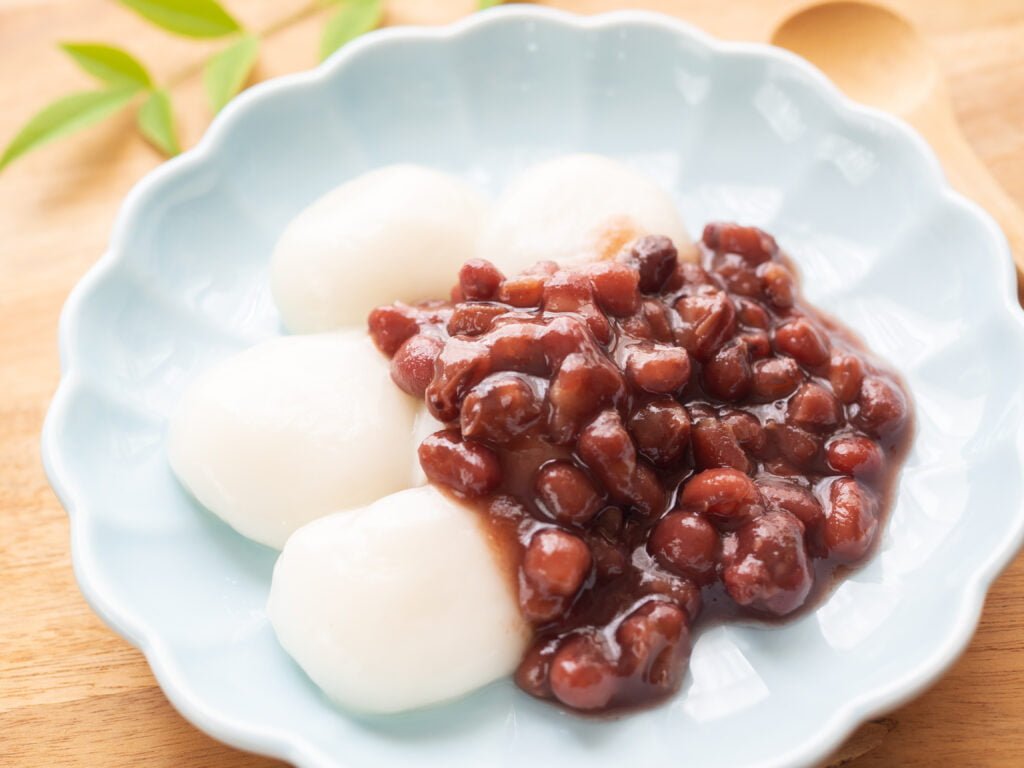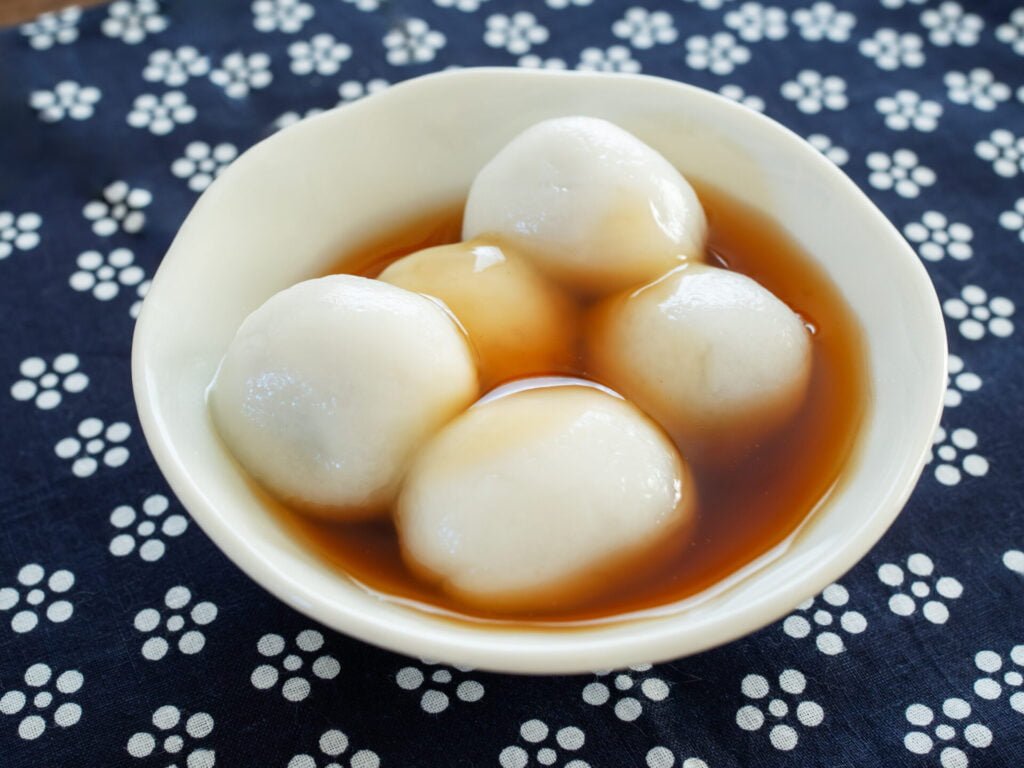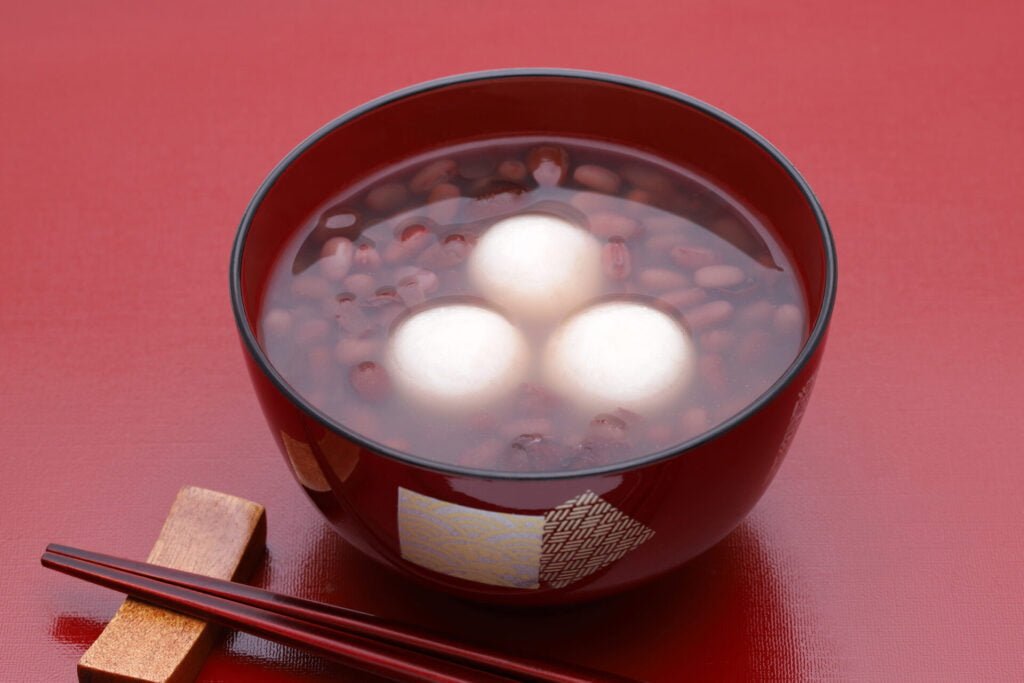The Magic of Mochi: Welcome to the World of Shiratama Dango
Among Japan’s traditional sweets, shiratama dango holds a special place. Loved for its unique chewy texture and versatility, it continues to captivate people’s hearts. In this article, we’ll explore the charm of shiratama dango, from its origins to how to make it, and even some delightful recipe variations.

What is Shiratama Dango: The Allure of a Traditional Japanese Sweet
Shiratama dango is a traditional Japanese sweet made by kneading shiratama flour with water, shaping it into small dumplings, and boiling them. Its name comes from its appearance – white, round shapes that resemble white jewels.
The origins of shiratama flour are unclear, with various theories existing. One suggests it was introduced during the Muromachi or Kamakura period by monks who traveled to Southern Song China (1127-1279) for Zen training, or by monks who came to Japan. However, this information is not definitive.
Shiratama dango became widely popular relatively recently. During the Genroku era of the Edo period (1688-1704), as sugar and sweet bean paste became more accessible to common people, shiratama dango also became popularized. It’s believed that the form of shiratama dango we know today was established during this period.
The most distinctive feature of shiratama dango is its “mochi-mochi” (chewy) texture. The softness that gently melts in your mouth, combined with appropriate elasticity, creates a unique mouthfeel. This texture can be considered a quintessential representation of the “mochi-mochi” sensation that Japanese people have loved for centuries.
The Secret of Shiratama Flour: Exploring the Differences with Other Rice Flours
The secret behind the unique texture of shiratama dango lies in its main ingredient, shiratama flour. Let’s compare shiratama flour with other common rice flours:
| Flour Type | Main Ingredient | Manufacturing Process | Stickiness | Texture | Main Uses |
|---|---|---|---|---|---|
| Shiratama Flour | Glutinous rice | Soaked, ground, then dried into powder | Medium | Chewy and smooth | Shiratama dango, Shiratama zenzai |
| Joshinko | Non-glutinous rice | Washed, dried, then ground into powder | Weak | Firm, chewy with good bite | Kashiwa mochi, Kusa mochi, Uiro |
| Mochiko | Glutinous rice | Washed, dried, then ground into powder | Strong | Fine-grained and smooth | Gyuhi, Daifuku |
The characteristic of shiratama flour is that when mixed with water and kneaded, it creates a dough with moderate stickiness and elasticity. Compared to other rice flours, it’s easier to handle and creates a smooth dough. It also maintains its shape well after boiling. It’s mainly used for shiratama dango and shiratama zenzai.
Joshinko is made from non-glutinous rice. It has less stickiness and provides a good bite. It also offers a chewy texture. It’s mainly used for Japanese sweets like kashiwa mochi, kusa mochi, and uiro.
Mochiko is made from glutinous rice like shiratama flour, but the manufacturing process is different. It creates a fine-grained, smooth, and very sticky dough. It’s mainly used for sweets that require a more mochi-like texture, such as gyuhi and daifuku.
Making Shiratama Dango at Home: Simple Recipe and Tips for Success
Shiratama dango can be surprisingly easy to make at home. Here’s a basic recipe and some tips for success.
Ingredients (for 4 servings):
- 200g shiratama flour
- 160ml water (may need adjusting depending on the type of shiratama flour)
Steps:
- Put the shiratama flour in a bowl.
- Gradually add water while mixing with your fingertips. Continue mixing until there’s no powdery texture left.
- Once the mixture starts to come together, knead with your palm. Continue kneading until it reaches the softness of an earlobe.
- Shape the dough into bite-sized pieces (about 2cm in diameter).
- Boil a large pot of water.
- Add the shaped dough to the boiling water. Once they float to the surface, boil for another minute.
- Remove the cooked dango and immediately place them in ice water to cool.
- Drain the water, and they’re ready to serve.
Tips for Success:
- The amount of water needed may vary depending on the type of shiratama flour, temperature, and humidity. It’s important to adjust by adding water little by little.
- When kneading the dough, be careful not to use too much force. It’s enough to knead until the powdery texture disappears and it comes together.
- Wetting your hands makes it easier to shape the dough.
- Adding a small amount of salt to the boiling water can make the dango whiter.
- Cooling the dango in ice water immediately after boiling helps maintain their chewy texture.
- It’s best to eat the dango immediately, but if you need to store them, keep them in water in the refrigerator.
Recipe Variations: Exploring the World of Japanese Sweets with Shiratama Dango
One of the charms of shiratama dango is its versatility. Here are some popular recipe variations:
- Mitarashi Dango
- Drizzle cooked shiratama dango with a sauce made from soy sauce and sugar. This sweet and savory flavor is a classic in Japanese confectionery.
- Anko Shiratama Dango
- Flatten the shiratama dango, wrap it around sweet bean paste, and reshape into a ball. You can use red bean or white bean paste according to your preference.
- Kinako Shiratama Dango
- Coat the cooked shiratama dango with a mixture of kinako (roasted soybean flour) and sugar. The nuttiness and sweetness perfectly complement the chewy texture of the dango.
- Shiratama Zenzai
- Add shiratama dango to sweet red bean soup. The contrast between the warm soup and cool dango is delightful.
- Fruit Shiratama
- Serve shiratama dango with matcha syrup or fruit sauce, and add seasonal fruits. This colorful dessert is especially popular in summer.


These variations are easy to try once you’ve mastered the basic shiratama dango recipe. Why not experiment with your own original arrangements based on the season or your preferences?
Shiratama dango holds a special place among traditional Japanese sweets due to its soft texture and versatility. Its ease of preparation at home is another attraction. We hope this article inspires you to try making shiratama dango. You’re sure to discover a new joy in creating Japanese sweets!
